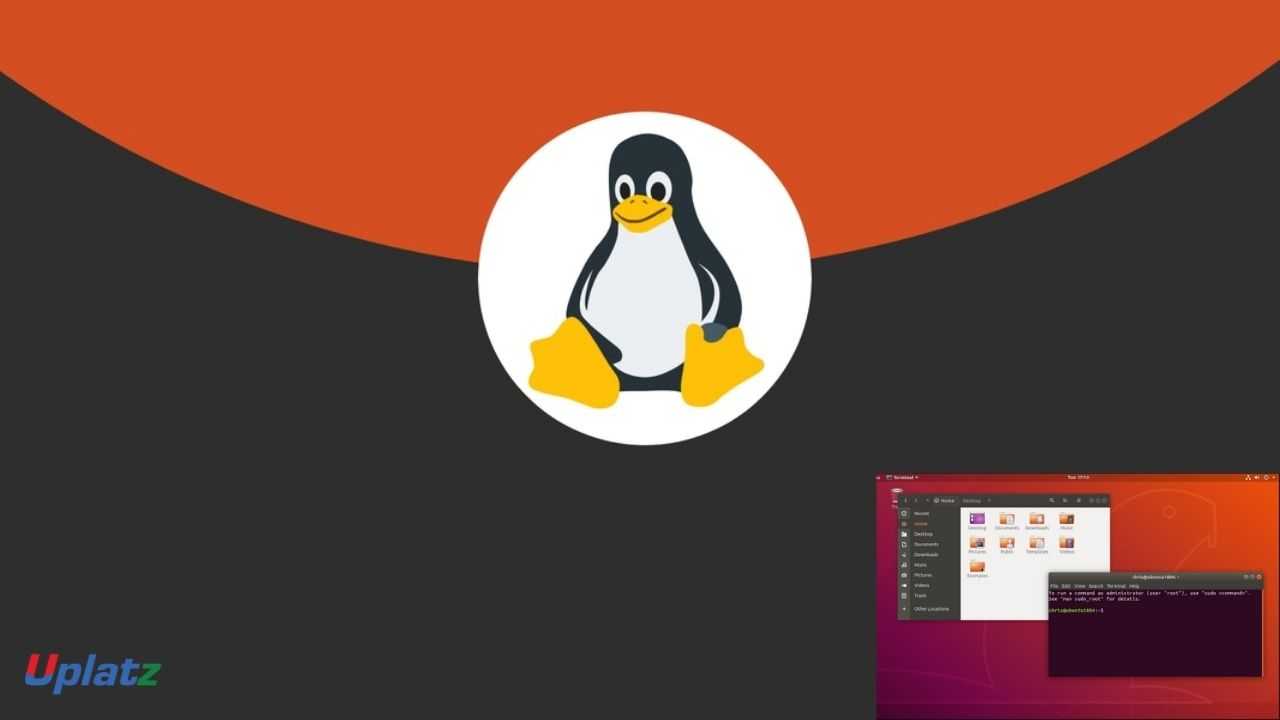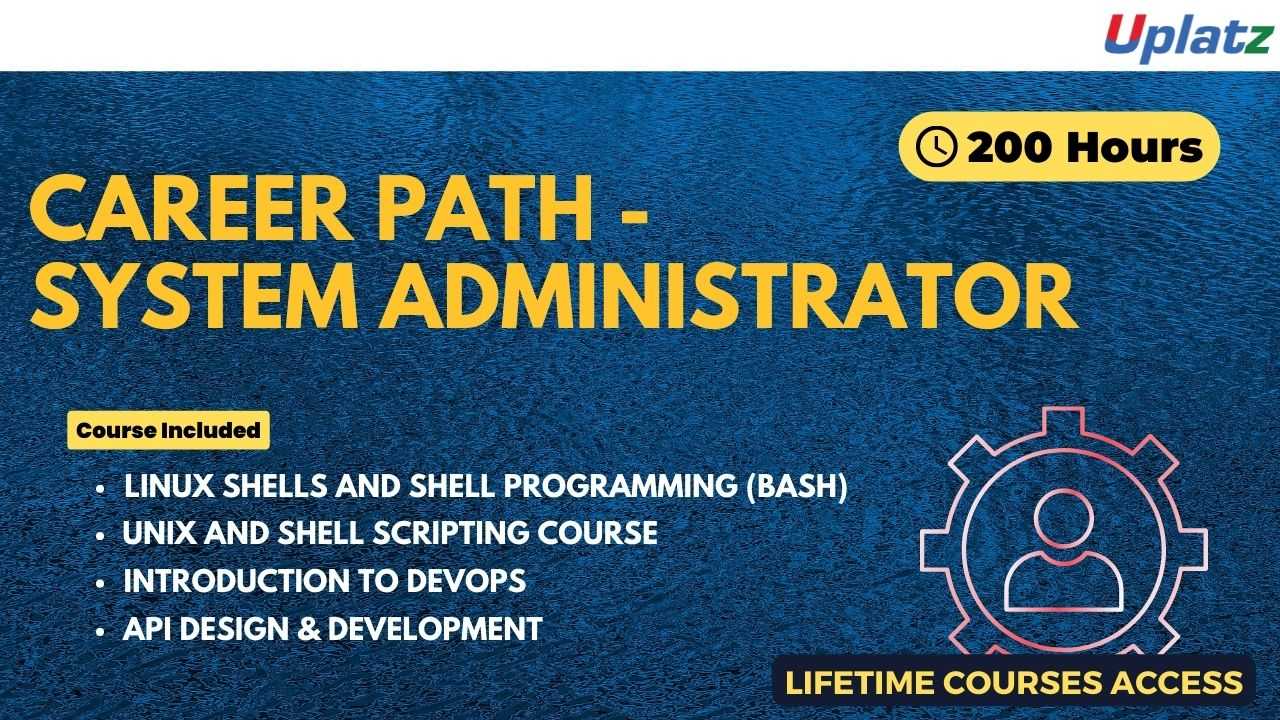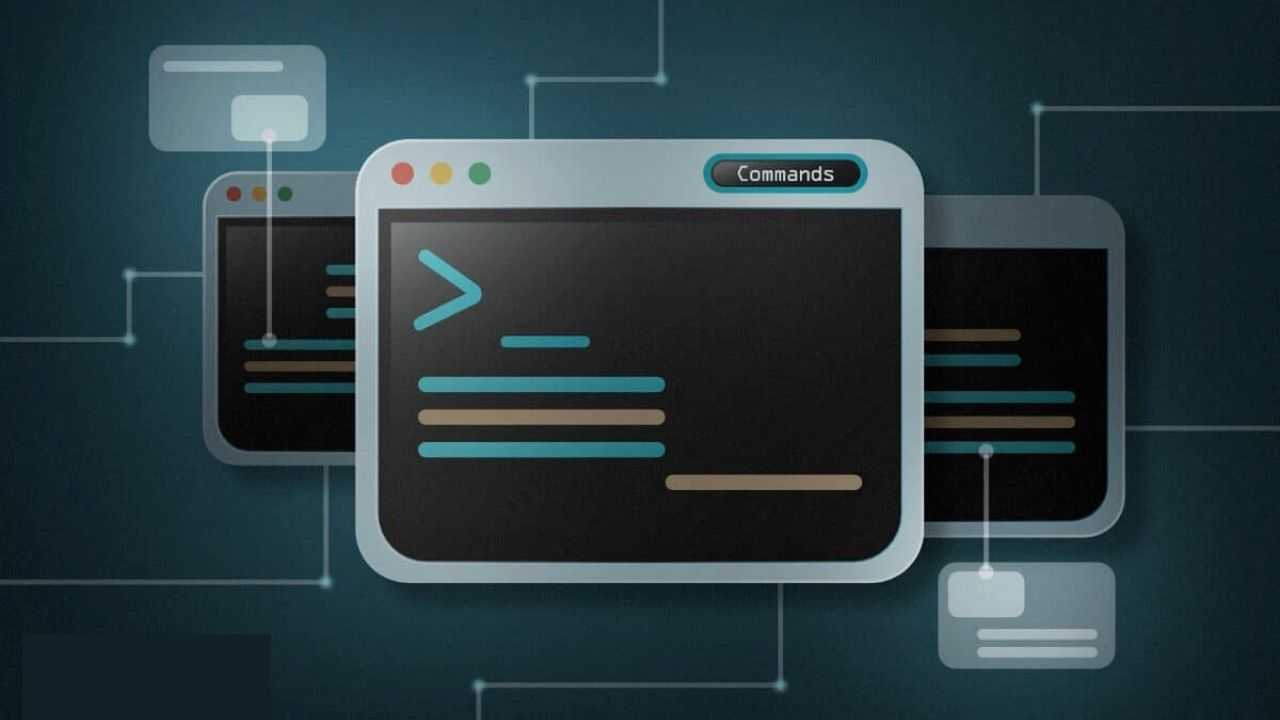Linux Utilities
Gain knowledge on Linux Utilities and its functions along with command-line navigation, file management, system administration. Become Unix/Linux pro. View Course Curriculum
Price Match Guarantee
Full Lifetime Access
Access on any Device
Technical Support
Secure Checkout
Course Completion Certificate
View Course Curriculum
Price Match Guarantee
Full Lifetime Access
Access on any Device
Technical Support
Secure Checkout
Course Completion Certificate
 82% Started a new career
BUY THIS COURSE (
82% Started a new career
BUY THIS COURSE (GBP 12 GBP 29 )-
 81% Got a pay increase and promotion
81% Got a pay increase and promotion
Students also bought -
-

- Mega Sale 50 - Any 50 Video Courses with Lifetime Access
- 1000 Hours
- GBP 300
- 1786 Learners
-

- Career Path - System Administrator
- 200 Hours
- GBP 32
- 714 Learners
-

- Unix - Linux - Shell Scripting
- 25 Hours
- GBP 12
- 347 Learners

Linux utilities are essential command-line tools designed to perform various tasks efficiently and effectively in a Linux environment. These utilities provide powerful functionality for tasks such as file management, text processing, system administration, network diagnostics, and more. Examples of common Linux utilities include 'ls' for listing files, 'grep' for searching text patterns, 'tar' for archiving files, 'top' for monitoring system resources, 'chmod' for changing file permissions, and 'ping' for testing network connectivity. Linux utilities form the backbone of Linux's flexibility, making it a robust and versatile operating system for diverse applications.
To realize the full processing power of your UNIX/Linux system, you need to choose the right tools and use them in the right combination. In this Linux and UNIX Tools and Utilities training course, you learn how to leverage the many tools and utilities in the UNIX operating system to upgrade your UNIX/Linux administration skills, maximize productivity, and streamline tasks by adding shell commands, filters, and languages - like awk.
Here are some examples of commonly used Linux utilities:
1. ls: Lists files and directories in the current directory.
2. cd: Changes the current directory.
3. mkdir: Creates a new directory.
4. rm: Removes (deletes) files or directories.
5. cp: Copies files and directories.
6. mv: Moves or renames files and directories.
7. cat: Concatenates and displays the contents of files.
8. grep: Searches for a text pattern in files.
9. find: Searches for files and directories based on various criteria.
10. awk: A powerful text-processing tool for pattern scanning and processing.
11. sed: Stream editor for text manipulation.
12. tar: Archives files into a tarball.
13. gzip: Compresses files using the gzip algorithm.
14. gunzip: Decompresses gzip-compressed files.
15. chown: Changes file ownership.
16. chmod: Changes file permissions.
17. df: Displays disk space usage.
18. du: Shows file and directory disk usage.
19. ps: Lists running processes.
20. kill: Sends signals to terminate processes.
21. top: Monitors system processes and resources.
22. free: Displays system memory usage.
23. ifconfig: Configures network interfaces.
24. ping: Tests network connectivity.
25. netstat: Displays network statistics.
26. ssh: Securely connects to remote machines.
27. scp: Securely copies files between local and remote systems.
28. nc: Netcat, a versatile networking utility.
29. cron: Schedules periodic tasks or jobs.
30. tar: Archives files into a tarball.
31. uptime: Shows system uptime and load average.
32. sort: Sorts lines of text files.
33. cut: Removes sections from lines of text.
34. paste: Merges lines from multiple files.
35. wc: Counts words, lines, and characters in a file.
36. head: Displays the beginning of a file.
37. tail: Displays the end of a file.
38. tee: Redirects output to multiple files.
39. diff: Compares files line by line.
40. cmp: Compares two files byte by byte.
41. date: Displays or sets the system date and time.
42. hostname: Shows or sets the system's hostname.
43. lsblk: Lists block devices, such as hard drives and partitions.
44. mount: Mounts filesystems.
45. umount: Unmounts filesystems.
46. who: Shows who is logged on.
47. history: Lists the command history.
48. ncdu: Analyzes disk usage with a more advanced interface.
49. ldd: Lists dynamic library dependencies.
50. file: Determines file type.
In this extensive training on Linux Utilities by Uplatz, you will be guided step by step using a logical and systematic approach along with deep and extensive knowledge on Linux Utilities and its functions.
Course/Topic - Linux Utilities - all lectures
-
In this session we will discuss about the disk utilities in Linux. This video talks about the different types of disk utilities and its function, such as du (disk usage), df (disk free space), dd, and hexdump.
-
In this session we will discuss about the process utilities in Linux. This video talks about the differnt types of process utilities and its functions such as ps, kill, xkill, ulimit, sleep, bg, fg, jobs, top
-
In this session we will discuss about the text processing utilities. This video talks about the text processing utilities such as find, locate and grep.
-
In this session we will discuss about the other miscellaneous commands used in Linux. This video talks about the commands such as history, tee, free and alias.
-
In this session we will discuss about the important part of archive and compress utilities in linux. This video talks about various commands for Compressing and decompresses (read as expand compressed file). To compress files you can use gzip, bzip2 and zip commands. To expand compressed file (decompresses) you can use and gzip -d, bunzip2 (bzip2 -d), unzip commands.
-
In this session we will discuss about the later part of compressing and archiving for backup restore (for backup and restore). This video talks about the utilities such as tar, gzip, gunzip, bzip2, bzcat, lzma, unlzma.
1. Learn about the fundamental elements of the operating system, specifically basic UNIX utilities, file systems, shell environments, shell and other scripting languages, operating system security, and standard text editors.
2. Learn objectives in the area of Operating Systems and Applications, specifically:
3. Operating systems concepts including organization, architectures, role and environments.
4. Exposure to operating systems on different platforms. , specifically:
5. Operating systems concepts including organization, architectures, role and environments.
6. Exposure to operating systems on different platforms.
Linux Utilities - course curriculum
· Disk utilities (du, df)
· Process utilities (ps and all options)
· Text processing utilities (head, tail, wc, find, grep etc.)
· Miscellaneous commands
· Compressing and archiving (backup and restore) utilities
· User management, time management and shutdown (init levels)
1. GCUX – GIAC Certified Unix Security Administrator
This certification needs to be renewed every 4 years to ensure ongoing competency in the field of Information Security.
2. Linux+ CompTIA
It focuses on security, storage, and visualization, kernel modules, enterprise-level device management, git & automation, server-side and command line, networking, and firewalls, troubleshooting, and SELinux.
3. LPI (Linux Professional Institute)
This certification does not require any prerequisites. The validity of this certification is 5 years. A candidate is required to pass both 101 and 102 exams to qualify for the certification.
4. LPIC 3 – 300 – Linux Enterprise Professional Certification
It provides for an enterprise-level professional certification program that represents the highest level of proficiency in distribution-neural Linux. It requires a candidate to have an active LPIC – 2 certification. The validity of this certification is 5 years.
An early career Linux System Administrator with 1-4 years of experience earns an average total compensation of $75,823 based on 325 salaries. A mid-career Linux System Administrator with 5-9 years of experience earns an average total compensation of $90,334 based on 301 salaries. An experienced Linux System Administrator with 10-19 years of experience earns an average total compensation of $105,442 based on 175 salaries. In their late career (20 years and higher) employees earn an average total compensation of $92,697
Job titles:
• Systems Administrator/ System Engineer
• Software Programmer
• Linux Administrator/ Linux Engineer
• DevOps Engineer
• Python Developer
• Network Engineer
1. What is Linux?
Linux is an open-source operating system kernel based on Unix that allows users to run applications and manage hardware resources.
2. What is the Linux file system?
The Linux file system is a hierarchical structure that organizes files and directories on a Linux system. It starts from the root directory ("/") and branches out from there.
3. How do you find the current working directory in Linux?
The "pwd" command can be used to print the current working directory.
4. What is a shell in Linux?
A shell is a command-line interpreter that allows users to interact with the Linux operating system.
5. What is the difference between a hard link and a symbolic link?
A hard link points directly to the physical location of a file, while a symbolic link is a reference to another file by its path.
6. How do you find information about a command in Linux?
The "man" command followed by the command name provides a manual page with information about the command.
7. Explain the 'grep' command in Linux.
'grep' is used to search text patterns in files. It allows users to find lines that match a specified pattern.
8. How can you check the available disk space in Linux?
The "df" command displays the available disk space on Linux.
9. What is the purpose of the 'chmod' command?
'chmod' is used to change the permissions of a file or directory in Linux.
10. How can you archive and compress files in Linux?
The 'tar' command is used for archiving, and 'gzip' or 'bzip2' are used for compression.
11. What is the significance of the /etc/passwd file in Linux?
The /etc/passwd file stores user account information, such as user IDs, group IDs, home directories, and default shells.
12. How can you add a new user in Linux?
The 'useradd' command is used to add a new user in Linux.
13. What is the purpose of the 'sudo' command?
'sudo' stands for "superuser do" and allows authorized users to execute commands with administrative privileges.
14. Explain the concept of runlevels in Linux.
Runlevels define different operating modes of a Linux system. They range from 0 (halt) to 6 (reboot).
15. How do you check the system information in Linux?
The 'uname' command provides system information like the kernel version and system architecture.
16. What is the Linux swap space, and why is it used?
Swap space is a part of the hard disk used as virtual memory when the physical RAM is fully utilized.
17. How can you kill a process in Linux?
The 'kill' command is used to terminate processes in Linux. It sends a specific signal to the process ID (PID).
18. Explain the 'top' command in Linux.
'top' is a command-line utility that provides real-time information about system processes and resource usage.
19. How can you set environment variables in Linux?
Environment variables can be set using the 'export' command in the terminal.
20. What is the purpose of the 'crontab' command?
'crontab' is used to schedule and manage periodic tasks or jobs in Linux.
21. How do you list the contents of a directory in Linux?
The 'ls' command is used to list the contents of a directory.
22. What is the Linux kernel, and what does it do?
The Linux kernel is the core component of the operating system that manages system resources and provides essential services to applications.
23. Explain the 'ssh' command in Linux.
'ssh' stands for "secure shell" and is used to establish a secure remote connection to another machine.
24. How do you find and replace text in a file using the command line?
The 'sed' (stream editor) command can be used for finding and replacing text in a file.
25. How can you check the system's IP address in Linux?
The 'ifconfig' command displays network interface configuration and IP addresses.
26. What is the purpose of the 'ping' command in Linux?
'ping' is used to check the connectivity between a host and a server or network device.
27. How do you install software packages in Linux?
Package management tools like 'apt', 'yum', or 'dnf' can be used to install software packages.
28. What is the purpose of the 'find' command in Linux?
The 'find' command is used to search for files and directories based on various criteria.
29. Explain the 'du' command in Linux.
The 'du' command is used to estimate file and directory space usage.
30. How can you monitor system logs in Linux?
The 'tail', 'grep', and 'less' commands are commonly used to monitor system logs in Linux.
31. What is the purpose of the 'mount' command?
The 'mount' command is used to attach filesystems to specific directories in the Linux directory hierarchy.
32. How do you check the system's memory usage in Linux?
The 'free' command provides information about system memory usage.
33. What is the purpose of the 'ps' command?
The 'ps' command displays information about running processes on a Linux system.
34. How can you update the system in Linux?
The package manager ('apt', 'yum', 'dnf', etc.) is used to update software packages on a Linux system.
35. What is the use of the 'scp' command?
'scp' (secure copy) is used to securely transfer files between a local and a remote system.
36. How do you check the available network interfaces in Linux?
The 'ip' command or 'ifconfig' command can be used to list available network interfaces.
37. What is the purpose of the 'lsblk' command?
The 'lsblk' command lists information about block devices, such as hard drives and partitions.
38. How can you check the kernel version in Linux?
The 'uname' command with the '-r' option displays the kernel version.
39. What is the purpose of the 'shutdown' command?
The 'shutdown' command is used to shut down or reboot the system.
40. How can you monitor real-time network traffic in Linux?
The 'tcpdump' command is commonly used to capture and analyze network traffic.
41. What is the purpose of the 'chown' command?
The 'chown' command changes the ownership of a file or directory.
42. How can you check the system load average in Linux?
The 'uptime' or 'top' command displays the system load average.
43. What is the function of the 'ln' command?
The 'ln' command is used to create links between files.
44. How do you check the size of a file in Linux?
The 'ls -l' command displays file sizes in bytes.
45. What is the purpose of the 'route' command?
The 'route' command is used to view or modify the IP routing table.
46. How can you change the hostname in Linux?
The 'hostname' command can be used to set or change the system's hostname.
47. What is the purpose of the 'grep' command?
The 'grep' command searches for text patterns in files.
48. How can you check the current users logged in to the system?
The 'who' or 'w' command displays information about currently logged-in users.
49. What is the use of the 'traceroute' command?
The 'traceroute' command traces the route taken by packets to reach a destination.
50. How can you check the Linux distribution and version?
The 'lsb_release' or 'cat /etc/os-release' command can display the Linux distribution and version.









